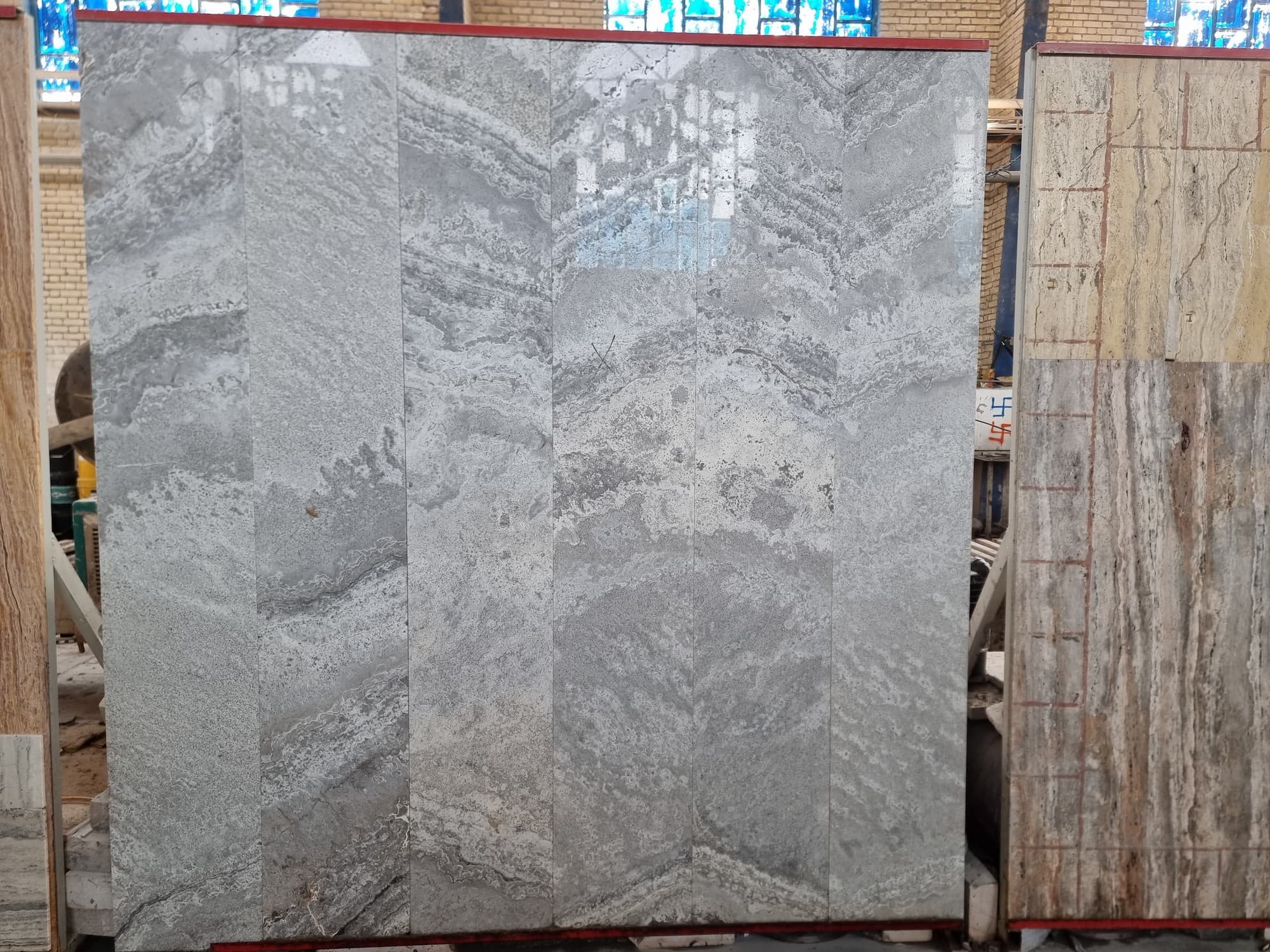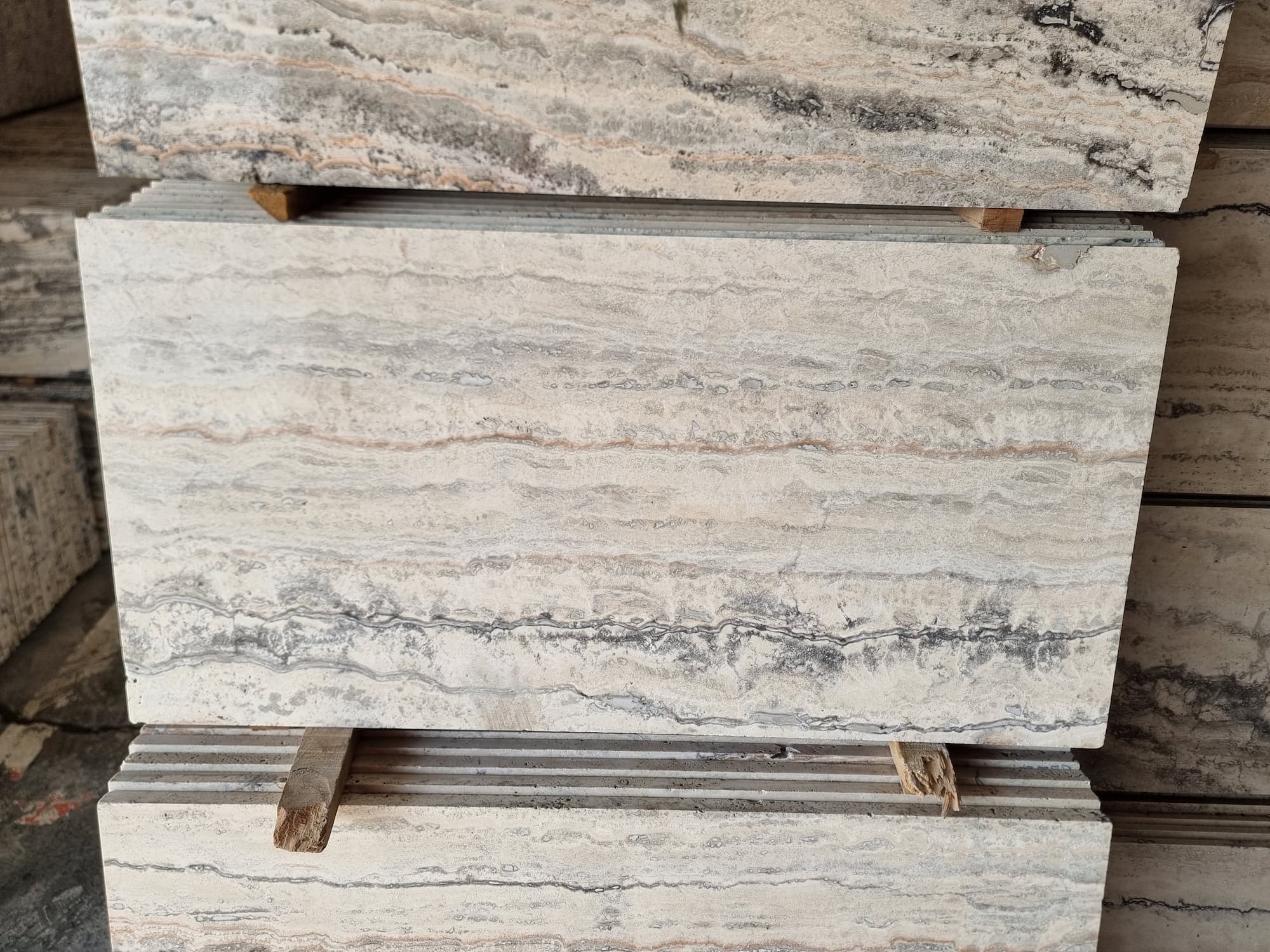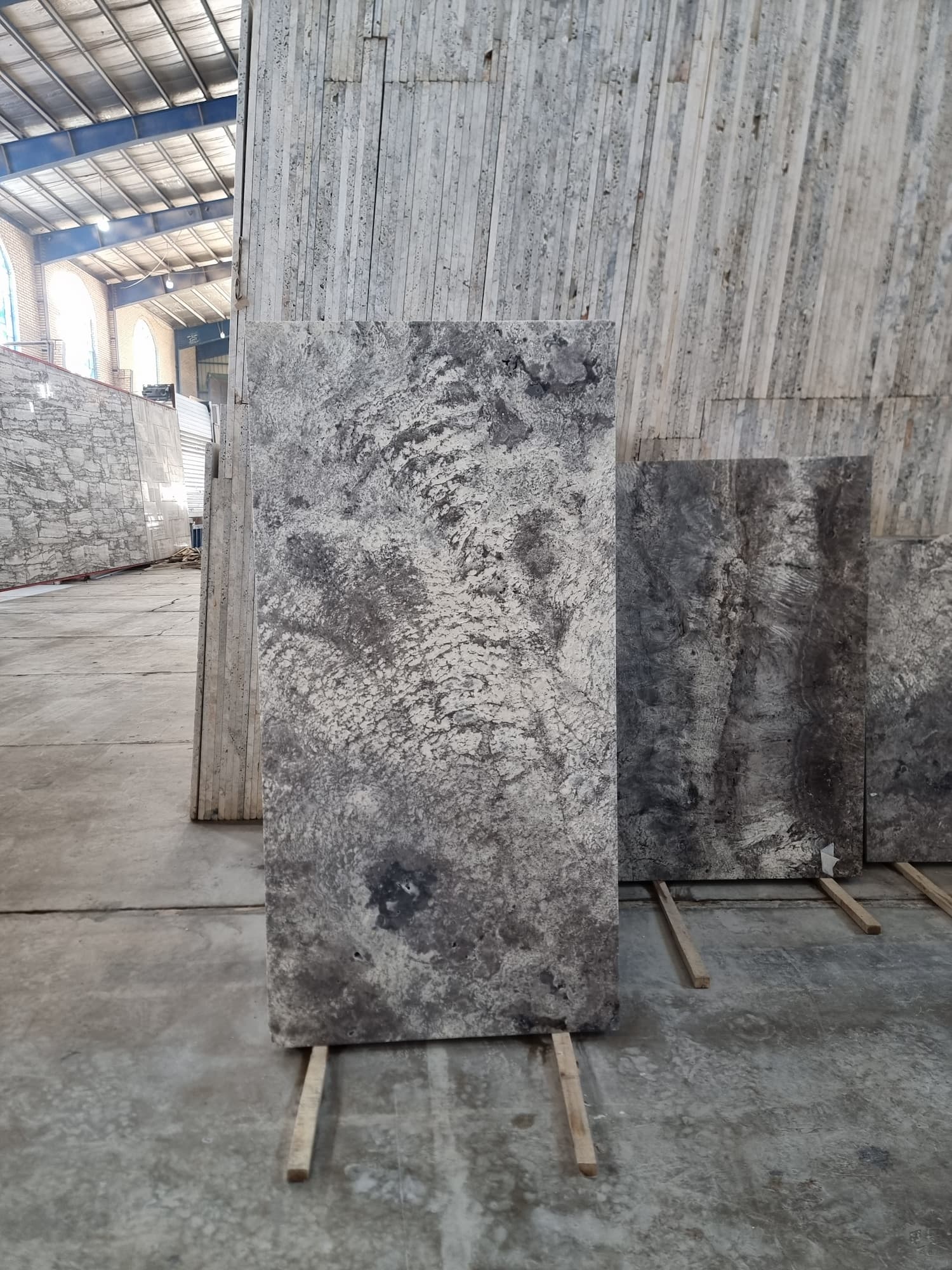Silver travertine, a luxurious and distinct variety of travertine stone, primarily originates from the mineral-rich quarries of Iran, particularly in areas like Takab. It is also sourced from regions in Italy and Turkey, where the geological conditions are conducive to forming this unique natural stone. Silver travertine is formed through the precipitation of calcium carbonate, often found near mineral springs or limestone caves. These geological processes lend the stone its characteristic light grey to silver hues, accented with intricate natural veins, which make it highly prized in the construction and design industries. This stone is favored for its beauty and durability and is used extensively in flooring, wall cladding, and outdoor landscapes.
Geographical Sources of Silver Travertine
Silver travertine is a distinguished variety of travertine, a type of limestone that forms through the precipitation of calcium carbonate at mineral springs or in limestone caves. Silver travertine’s unique coloring and texture make it a favored material in high-end architecture and design projects worldwide. This stone is primarily sourced from a few key regions globally, each known for its extensive travertine deposits and specialized quarrying techniques.

Iran
Iran is a pivotal player in the global supply of silver travertine, with its substantial quarries predominantly situated in the provinces of Takab and Mahallat. These areas are geologically marked by their abundant travertine reserves, similar to those in Turkey, emerging from regions with pronounced volcanic activity and mineral-laden hot springs. These locales’ environmental and geological conditions foster the formation of travertine with distinct characteristics.
The Iranian silver travertine is notably darker and has a denser composition than its Turkish and Italian counterparts, attributing a unique aesthetic and physical quality to the stone. This variation in color and density not only differentiates Iranian travertine but also enhances its suitability for specific applications where durability and distinct visual appeal are desired.
These quarries harness advanced extraction methods to ensure the travertine retains its natural beauty and structural integrity. The meticulous process involves precise cutting that follows the stone’s natural veins, optimizing the visual appeal of the extracted slabs and tiles. Post-extraction, the stone undergoes a series of processing steps, including curing, cutting to size, and sometimes enhancing its natural color to meet international market standards.
Iran’s role in the travertine market is bolstered by its commitment to quality and the vast reserves that promise continued supply. This positions Iranian silver travertine as a preferred choice for architects and designers looking for materials that combine durability with aesthetic versatility. The stone’s rich color palette and the region’s capability to supply large quantities make it a staple in domestic projects and significant architectural endeavors worldwide.
Turkey
Turkey is one of the leading producers of silver travertine, with most of its quarries located in the Denizli province. This area is geologically rich with large deposits of travertine formed from the thermal waters that abound in the region. The specific environmental conditions and mineral compositions in this area allow for the formation of travertine with light silver to ash-gray hues, which are highly sought after in global markets.

Italy
Italy, particularly the areas around Tivoli and Guidonia Montecelio near Rome, has a long history of travertine quarrying. These quarries have been operational for centuries, famously supplying the material for many of Rome’s historic buildings and monuments. Italian silver travertine is known for its high quality and unique vein patterns due to the varied geological processes occurring within the Apennine mountain range.
In addition to the primary producers, other countries like Mexico and Peru have smaller-scale operations that contribute to the global supply of travertine. These regions, however, produce travertine that varies in color and pattern from the classic silver variety found in the significant quarries.
Silver travertine’s global distribution and quality from these key geographical sources enable its continued popularity in both traditional applications, like flooring and cladding, and in innovative uses such as in modern art and high-end contemporary design. The care taken in quarrying and processing this stone reflects its esteemed status in the natural stone market.
Geological Formation of Silver Travertine
Silver travertine is a captivating natural stone that forms through specific geological processes primarily involving mineral springs and limestone caves. This type of travertine is predominantly created when groundwater, rich in calcium carbonate, percolates through limestone bedrock, dissolving the material and re-depositing it as travertine. This process often occurs in and around hot springs or limestone regions where the water emerges and evaporates, leaving behind layers of calcite, a crystalline form of calcium carbonate. Over thousands of years, these layers accumulate and compact into the dense, beautifully patterned stone known as silver travertine. The “silver” quality comes from other minerals, such as silver ions and compounds, which can impart a shimmering gray hue to the travertine, distinguishing it from its warmer-toned counterparts. This geological formation contributes to the unique aesthetic of silver travertine and its structural properties, making it a popular choice for both decorative and structural elements in construction and design.

I suggest you also read the following article: How to polish a silver travertine stone
Mineralogical Composition of Silver Travertine
Silver travertine’s allure is primarily attributed to its unique mineralogical composition, predominantly comprising calcite and occasionally aragonite, both crystalline forms of calcium carbonate. These minerals form under different conditions of temperature and pressure, which dictate the stone’s textural variety and color nuances. Calcite, the more stable of the two, is commonly found in the layers of silver travertine, contributing to its hardness and durability. Aragonite, which may transform into calcite over time, adds a crystalline luster and can affect the refraction of light, thereby influencing the stone’s hue and shimmer. The presence of trace minerals, such as iron and manganese, can impart a range of silver to gray shades, enriching the visual complexity of the travertine. This composition not only defines the aesthetic qualities of the stone but also enhances its structural integrity, making silver travertine a preferred material for both functional and decorative purposes in architecture and design.
Conclusion
Silver travertine remains a timeless and luxurious choice for many applications, from grand architectural projects to intimate, personal spaces. Its unique beauty, formed through millennia of natural processes, makes it a standout material that can elevate any design.

 Marble
Marble